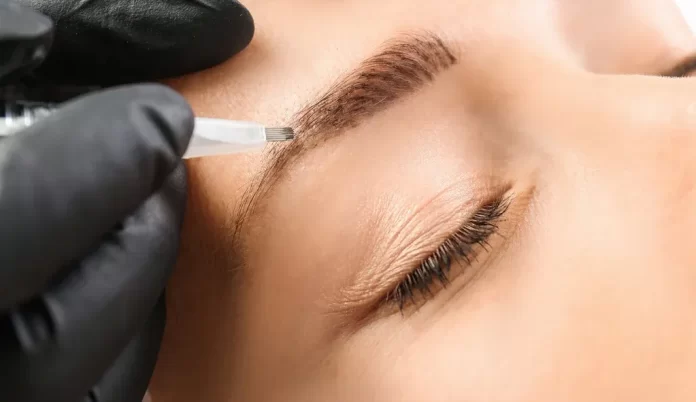When it comes to skincare, one size doesn’t fit all. We all have unique skin types and concerns, so tailoring our skincare routines is essential. Effectively treating cosmetic concerns begins with understanding your skin type and adopting a personalized approach. PeachyMed delves into the world of skincare, focusing on the importance of a skin type-focused approach and providing simple, easy-to-follow guidance for achieving your best skin yet.
Table of Contents
Understanding Skin Types
Before diving into skincare specifics, let’s first understand the different skin types. Normal skin is well-balanced and not overly oily or dry. It has a smooth texture, small pores, and is generally blemish-free.
Dry skin tends to feel tight and may be prone to flakiness, itching, and redness. It often lacks moisture and can be sensitive. On the other hand, oily skin is characterized by excess oil production, resulting in enlarged pores and a shiny complexion. It can be prone to acne and blackheads.
Combination skin exhibits more than one skin type characteristic. For instance, you might have an oily T-zone (forehead, nose, and chin) while the rest of your face is dry or normal. Sensitive skin is easily irritated and may react to certain skincare products or environmental factors. It can manifest as redness, itching, or burning.
Lastly, mature skin may have fine lines, wrinkles, and age spots. This is because our skin naturally loses elasticity and moisture as we age. Proper skincare can help manage and minimize these age-related concerns.
Identifying Your Skin Type
You can perform a simple test at home to determine your skin type.
The Bare-Faced Test
Start with a clean face and leave it untouched for a few hours. Observe how it feels. You likely have normal skin if your skin feels comfortable without noticeable dryness, oiliness, or redness. If it feels tight and appears flaky, you probably have dry skin. If it’s shiny and oily, you have oily skin. Combination skin will exhibit different characteristics in different areas of the face. You may have mature skin if you are in your 40s or older and notice fine lines, wrinkles, and age spots.
The Sensitivity Test
Pay attention to how your skin reacts to various skincare products. You likely have sensitive skin if it frequently becomes irritated or experiences redness and burning sensations. Being mindful of the products you use is especially important if you have this skin type.
Once you’ve identified your skin type, you can effectively tailor your skincare routine to address its specific needs.
Skincare Tips By Skin Type
Now that we’ve covered the basics of skin types let’s explore how to treat cosmetic concerns based on your skin type.
Normal Skin
Use a gentle, hydrating cleanser to maintain your skin’s natural balance. Opt for a lightweight, non-comedogenic moisturizer to keep your skin hydrated. Always wear sunscreen with at least SPF 30 to protect your skin from UV damage. Focus on preventive care and consider using antioxidants to keep your skin healthy and radiant.
Dry Skin
Choose a creamy or oil-based cleanser that won’t strip away moisture. Use a rich, hydrating moisturizer to combat dryness. Apply sunscreen daily and consider using a moisturizer with built-in sun protection. Look for products with hyaluronic acid and ceramides to lock in moisture and repair the skin barrier.
Oily Skin
Use a gentle, foaming cleanser to control excess oil without over-drying. Opt for an oil-free, mattifying moisturizer to keep your skin hydrated without adding extra oil. Use an oil-free, non-comedogenic sunscreen to prevent clogged pores. Incorporate salicylic acid or benzoyl peroxide to manage acne and keep excess oil at bay.
Combination Skin
Use a gentle cleanser and pay attention to the needs of different areas of your face. Apply a lightweight, non-comedogenic moisturizer on dry areas and a mattifying moisturizer on oily. Use a combination of the above sunscreen recommendations based on the area of your face. Spot treat different areas as needed. For example, apply acne treatments to oily zones and hydrating serums to dry areas.
Sensitive Skin
Opt for a fragrance-free, hypoallergenic cleanser. Choose a soothing, fragrance-free moisturizer with gentle ingredients. Use a mineral-based sunscreen with zinc oxide or titanium dioxide to minimize irritation. Be cautious with new products and perform patch tests. Focus on products designed for sensitive skin, such as those labeled “dermatologist-tested” or “hypoallergenic.”
Mature Skin
Use a gentle, anti-aging cleanser to remove impurities. Apply a rich, hydrating moisturizer with ingredients like retinol, peptides, and antioxidants. Prioritize a broad-spectrum sunscreen to protect against further signs of aging. Consider using targeted anti-aging serums and consult a dermatologist for advanced treatments like chemical peels or microdermabrasion.
Final Thoughts
PeachyMed says a skin type-focused approach to skincare is the key to addressing cosmetic concerns effectively. By understanding your skin type and tailoring your routine accordingly, you can achieve healthier, more radiant skin. Remember that consistency is crucial, and it may take time to see noticeable improvements. Consult a dermatologist for personalized guidance if you’re uncertain about your skin type or have persistent concerns. With the right skincare routine, you can confidently put your best face forward daily.
















